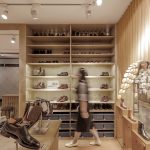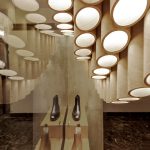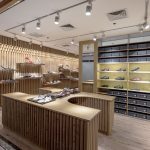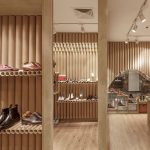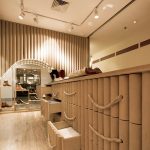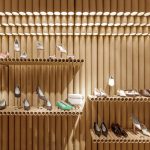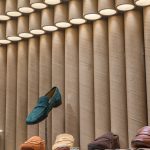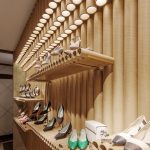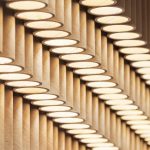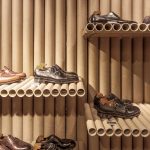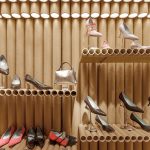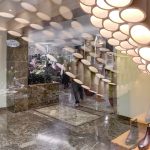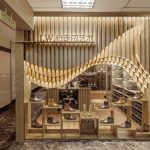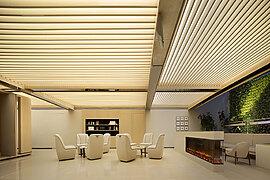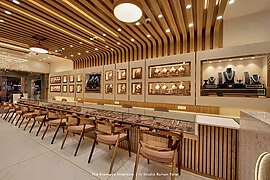The previous Importance of Walking store was completed in 2014 followed by a fairly smooth business. The store space turned out to have been used for 3 years before demolition together with the whole retail side of the street. The store then moved into Lido Place, a popular commercial complex nearby, with the store area increased to 60㎡. The new IW store carried both man and women’s shoes, and also displayed a working table for shoe customization. The design emphasized functional needs by providing sufficient display and storage.
Project site: Beijing
Time of design: 2017
Time of completion: 2017
Project scale: 60 sqm
Project client: IW Store
Design team: Di Shaohua, Ni Shiyuan, Feng Jiancheng
Photographer: Jin Fengzhe, Feng Shuxian
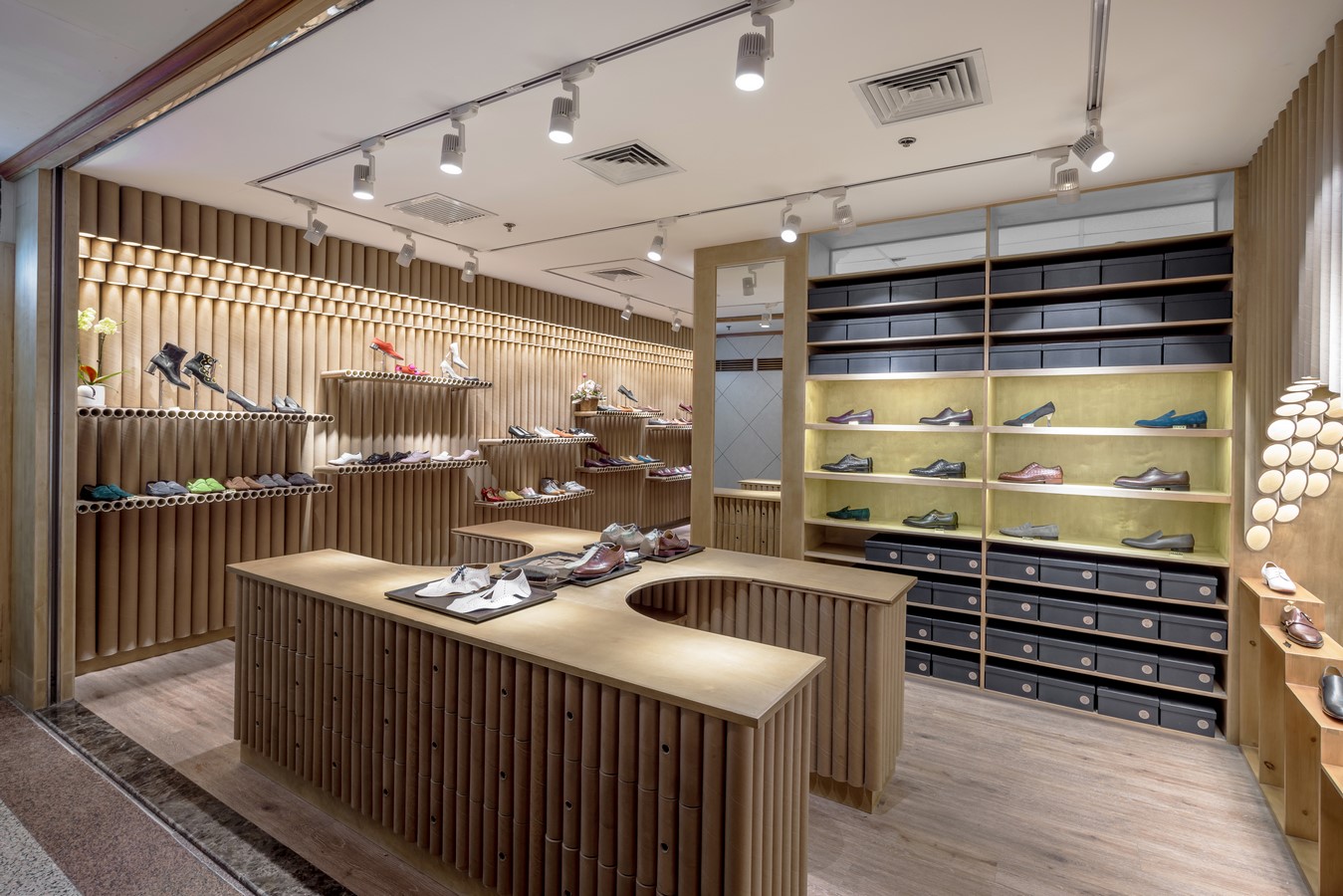
Most commercial spaces in Beijing have interior public area renovated every 5-10 years. For individual shops, the renovation cycle is even shorter, about 3 years as normally required by the commercial entity. While it certainly hasn’t been an ecologically friendly strategy, it also constantly dilutes people’s memory and familiarity of a sense of a place.
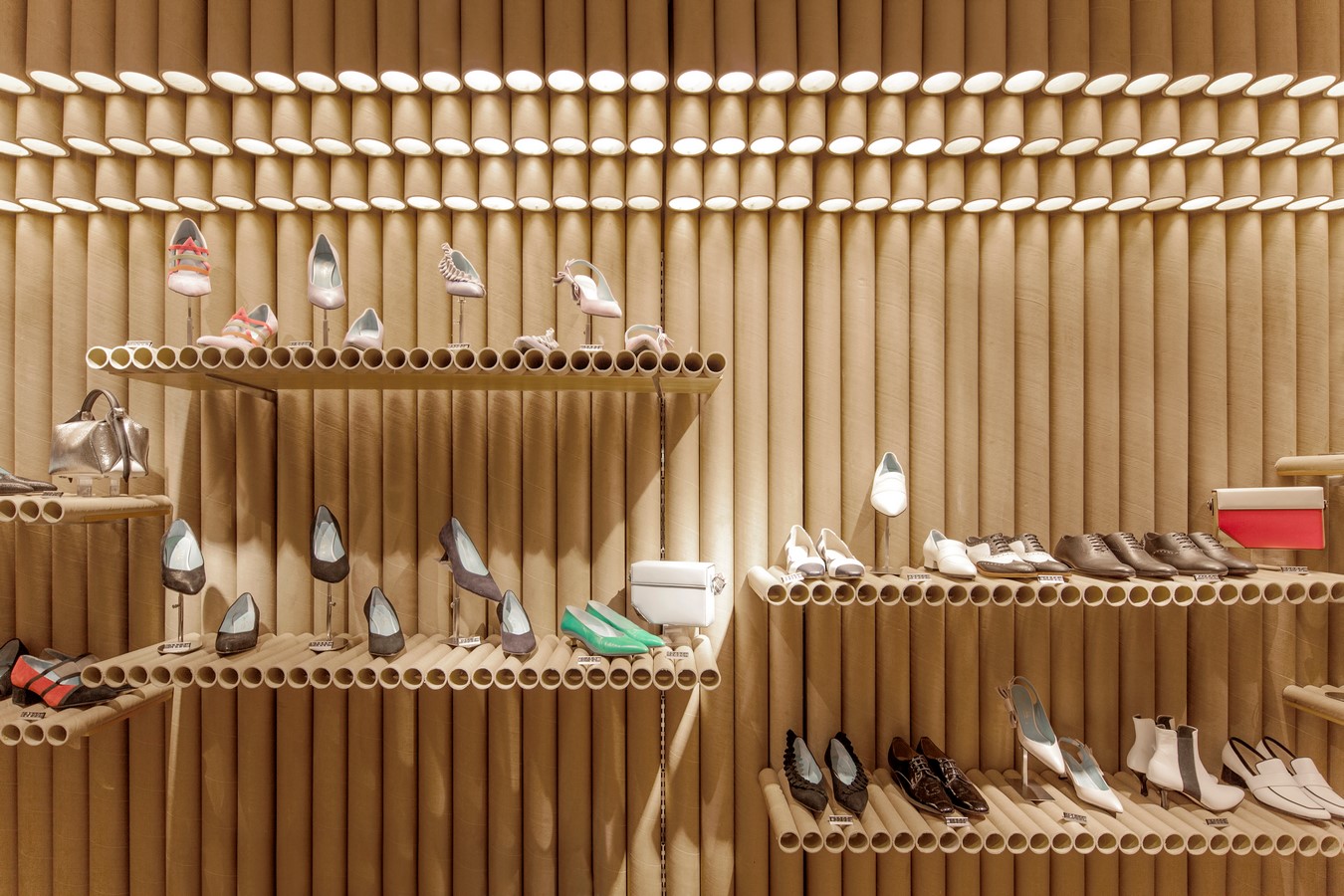
Lido Place was an exception. It was built in the year of 2000. The original interior decoration of the public area was kept for more than 20 years as a result of its conservative yet classic design, high quality materials and durable construction details. The commercial operations has also been one of success. Throughout the years, Lido Place has become an irreplaceable part of the neighborhood life, generated a true sense of a place and became an urban synergy that has triggered growth of a lively neighborhood.
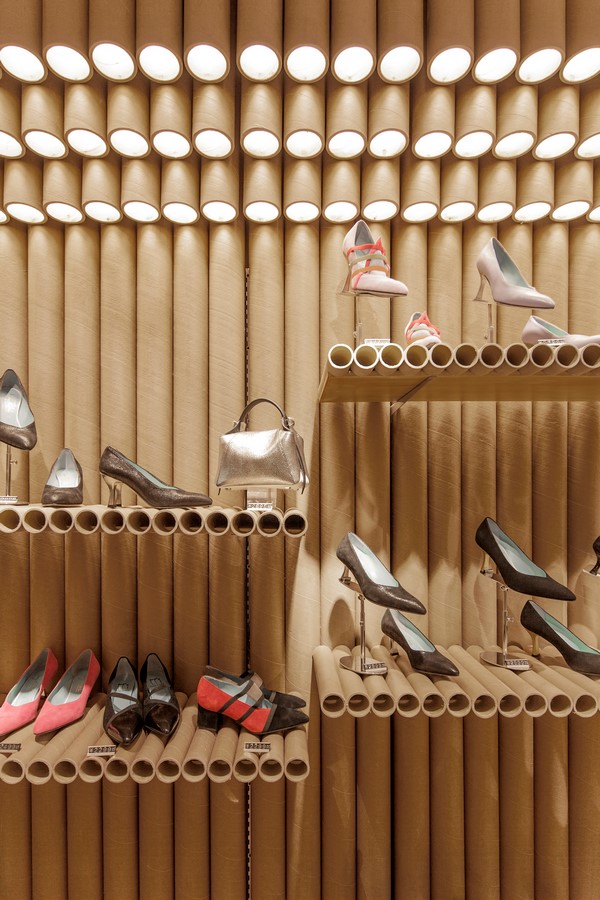
The design intention of the new Importance of Walking store came from a desire to extend that sense of intimacy and familiarity of the place. The main material chosen for the store was brown paper roles that were to be disposed otherwise. The advantages of the material are two-fold: brown color merged into the public areas that were applied with brown and cream natural marble stone; for shops with a 3 year renovation cycle, paper is the most eco-friendly material. The design focused on resolving multiple functional and formal issues through detailing a single material to create walls, shelves, fixed furniture, lighting, logo, etc.



